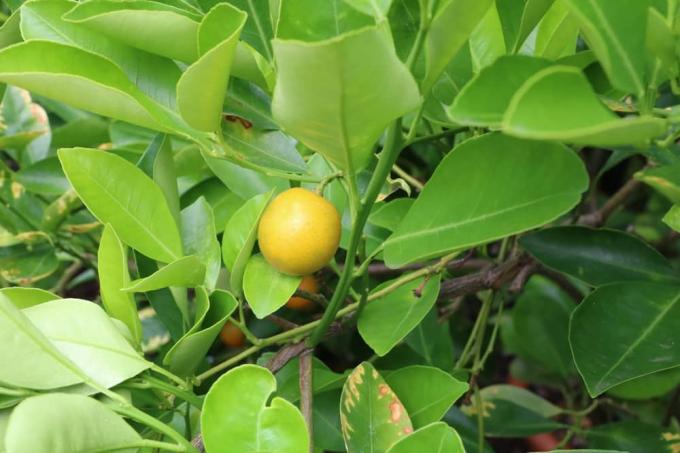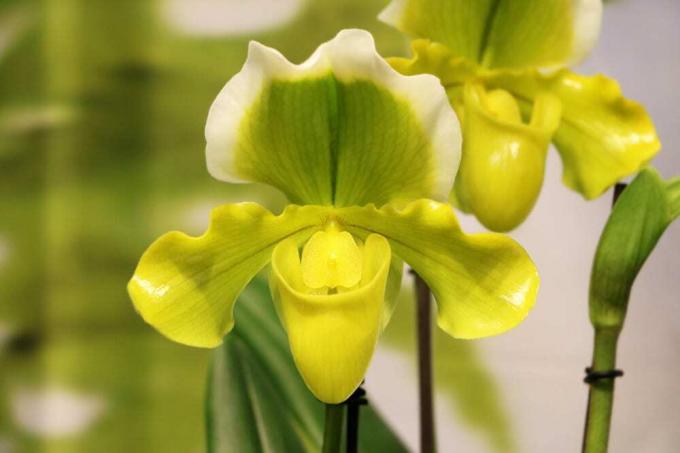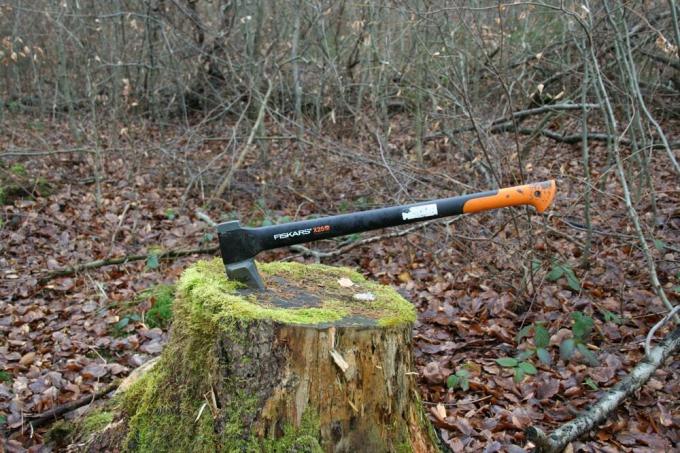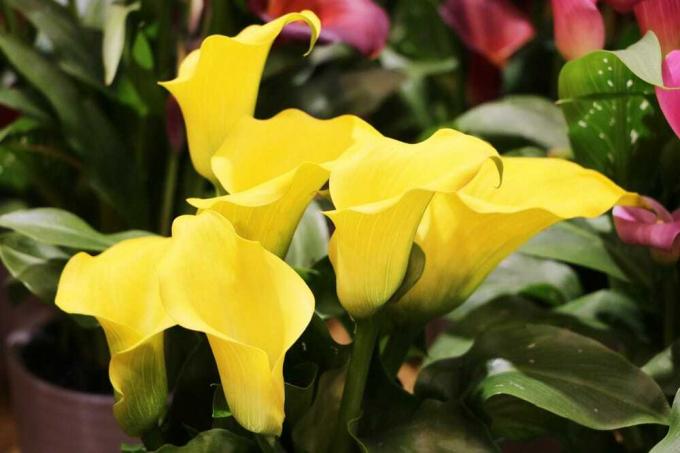

Table of contents
- loss of leaves
- Pour
- care mistakes
- location error
- hibernate
- Conclusion
The kumquat tree occasionally sheds individual leaves and flowers, this circumstance has natural causes and is usually no cause for further concern. However, if the loss of leaves increases, then the triggers for it should be examined closely. Especially when more than half of the leaves have already been shed and the bare branches are turning brown. To ensure that the exotic citrus tree can be enjoyed for a long time, the temperature, the lighting conditions, the location and the watering units play an important role.
loss of leaves
The kumquat tree regularly sheds individual leaves, this is a natural circumstance. If the tree loses a lot of its leaves in winter, then that too is a completely normal process. This serves to protect the plant, as the metabolism is significantly reduced. Since far fewer nutrients are now being absorbed, not as many nutrients may be consumed. At other times of the year, however, extreme leaf loss is an indication of deficiencies in cultivation. The size of the bucket also plays an important role in healthy growth. When the roots start to fill the entire planter, the kumquat tree needs a much larger pot.
- If the loss of leaves is too severe, take countermeasures as soon as possible
- watch the plant closely
- Analyze reasons and triggers
- Control care and location
- Check for diseases and pests
Pour
If the kumquat tree loses a lot of leaves in the summer months, this is often due to incorrect watering. It is therefore essential to check your own watering behavior. Too little water leads to leaf loss, but it shouldn't be watered too much either. In addition, the plant does not tolerate extremely calcareous irrigation water, but the lime value varies greatly from region to region. This value can be determined with a test from a specialist retailer. Another reason for leaf loss can also be too low humidity levels. Due to its exotic origin, the citrus tree is used to high humidity.
- Plant needs plenty of watering, especially during the growth phase
- Cannot cope with permanent waterlogging
- Dammed water in the plant pot leads to rotting roots
- Create a drainage layer and check the drain for blockages
- If the tap water is cold, it is better to collect rainwater for watering
- Spray the plant carefully with lime-free water
- Alternatively, place a vessel filled with water nearby
Tip:
If you live in a region with very hot summer temperatures and low humidity, you can place the tree in a larger bucket filled with water during this time. However, on a raised platform, so that the excess irrigation water can drain off completely and no waterlogging occurs.
care mistakes

If the kumquat tree is to develop many leaves and bloom diligently, then proper care is crucial. Especially when planting, you have to pay attention to the quality of the substrate, as the plant reacts very sensitively in this area. If the flowers develop poorly during the flowering period, do not open at all or fall off quickly, then the substrate often does not contain enough nutrients. Nutritious soil is also required for a bountiful harvest, otherwise no fruit will grow. However, do not be surprised, the plant only bears fruit every two years.
- Extremely sensitive to lime, both in the irrigation water and in the soil
- The optimum pH value is in the acidic range
- Descale extremely cold tap water with water filters
- Extremely high nutrient requirements, fertilize at least every 2 weeks
- Fertilizer for citrus plants is ideal
- Temporarily use fertilizer with a lot of potassium for rich flowering
location error
If the kumquat tree is cultivated in the living quarters, then the orientation of the location is very important. The citrus plant comes from Asia and is therefore used to tropical temperatures with lots of sun. However, the double-glazed windows that are installed almost everywhere these days filter out many important light components, so that the plant is literally in the dark. A permanent lack of light leads to a loss of leaves and flowers.
- Prefers warm and sun-drenched living spaces
- Window sills facing west and south are ideal
- North and east windows are unsuitable
- In good weather, place the plant in front of the open window
- If available, bring to the balcony during the day
- Absolutely avoid drafts at the location, promotes infestation with pests
- Brighten up locations that are too dark with a plant lamp
hibernate
In its homeland, the kumquat tree is not used to the dark season and the associated lack of light. These circumstances are not well tolerated and often lead to severe leaf loss. The darker the location, the more leaves the ornamental shrub will lose. In order to prevent this, the site conditions during the hibernation play an important role. If the heat-loving plant is cultivated in the garden, on the balcony or the terrace, then it can usually tolerate the first and still light frosts in autumn quite well. For the winter and with extremely low minus values, however, the plant needs an adequate winter quarters. Depending on the weather and the region, the kumquat tree can move outside again from May.
- Only conditionally hardy, has to move at the beginning of winter
- Choose a location that is as bright as possible for winter quarters
- However, it needs cool temperatures to bloom again the following year
- Temperatures between 5-10° C are ideal for overwintering
- Do not place too close to radiators
- Dark attics, corridors and garages are unsuitable as winter locations
- Seldom used guest rooms and bright corridors are ideal
Tip:
In the winter break should not be fertilized and watered only a little. In addition, the plant must be checked regularly for waterlogging, rotting roots, diseases and pests.
Conclusion
If the kumquat tree occasionally loses some leaves and flowers, this is a completely natural process and nothing to worry about. However, there are often serious reasons behind extremely severe leaf loss. If these are not recognized and eliminated promptly, this can lead to the complete death of the plant. Therefore, the triggers for a massive shedding of the leaves must always be examined. In this way, suitable countermeasures can be initiated immediately. The reasons often include errors when watering, both too much and too little water is harmful to the plant. Kumquats do not tolerate waterlogging at all, this leads to signs of rot on the roots and then to shedding the leaves. If the leaves, flowers and fruits are poor or not developed at all, then the nutrient content of the substrate is often the trigger. It is therefore important to ensure regular fertilizer application, especially during the flowering period. Due to its exotic origin, the plant prefers sunny locations with a lot of direct sunlight. Dark site conditions are not tolerated and also lead to leaf loss. In addition, the plant suffers from persistent drafts, too low temperatures in summer and too little humidity. In the winter quarters, however, cool temperature values are desirable in a bright location.
 garden editorial
garden editorial I write about everything that interests me in my garden.
Learn more about plant care

Prick radishes: Instructions | How to increase the harvest
Pricking out is a common horticultural practice that is particularly important when growing radishes. If the plants are too close together, they cannot develop. With the right approach, separation becomes child's play.

Fertilize orchids - when, how and with what? The top 10 fertilizers
Orchids are the ideal eye-catcher for the windowsill, the balcony and in the garden. Because of the plant family's unique diversity, many gardeners wonder how fertilizing the Orchidaceae works to provide the flowers with the right nutrients.

Plants with white mold on leaves - this helps
White mold on leaves occurs both in the garden and on indoor plants. Mold growth can have various triggers and causes. This white coating often forms when it has rained for a long time or when indoor plants have been given too much water. With the right approach, further spread can be prevented in the long term.

Remove tree stump / have it milled - costs + prices of the root cutter
An unwanted tree stump can be removed in a number of ways, although using a stump grinder is usually the best way to do this. Here you can find out how this device is used and what needs to be taken into account when using this method!

Build your own rhizome barrier for bamboo & co – alternatives
Plants with rhizomes, i.e. roots that spread underground from which new plants grow elsewhere, can quickly spread throughout the garden bed and to the neighbor. To prevent this from happening in the first place, rhizome barriers should be used around the plant, for example the popular bamboo, which the hobby gardener can also build himself.

Repot indoor plants - instructions for popular green plants
If you also like a lot of plants in the apartment, you usually have a lot of beautiful, especially large green plants in the corners. In addition to regular watering and fertilizing, care also includes repotting, which should be done every three to four years at the latest. Repotting the plant not only gives it more space, but also fresh soil with new nutrients.
